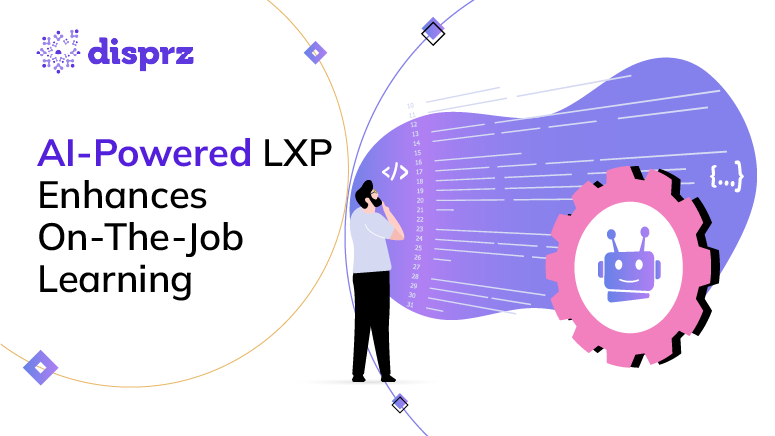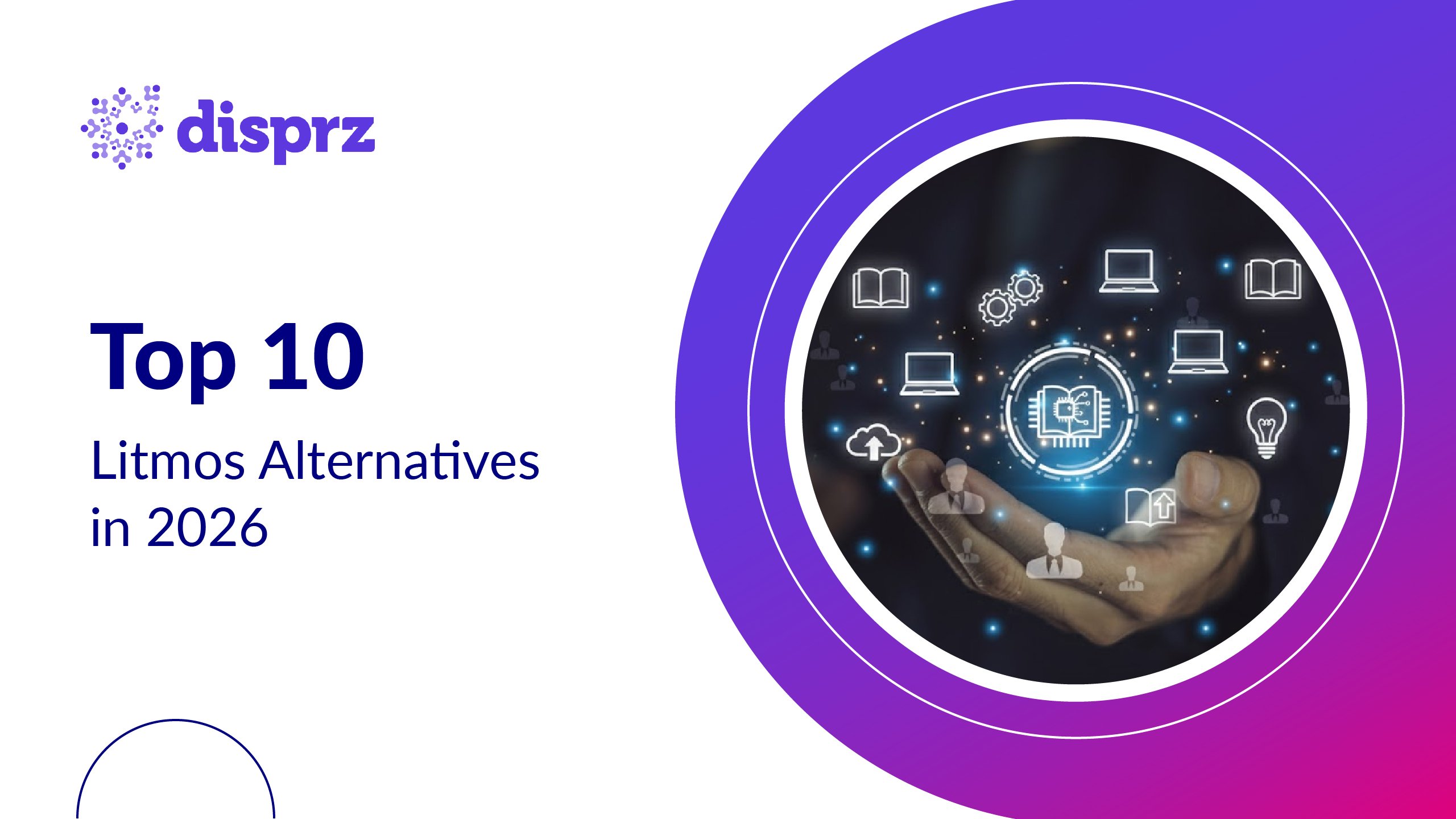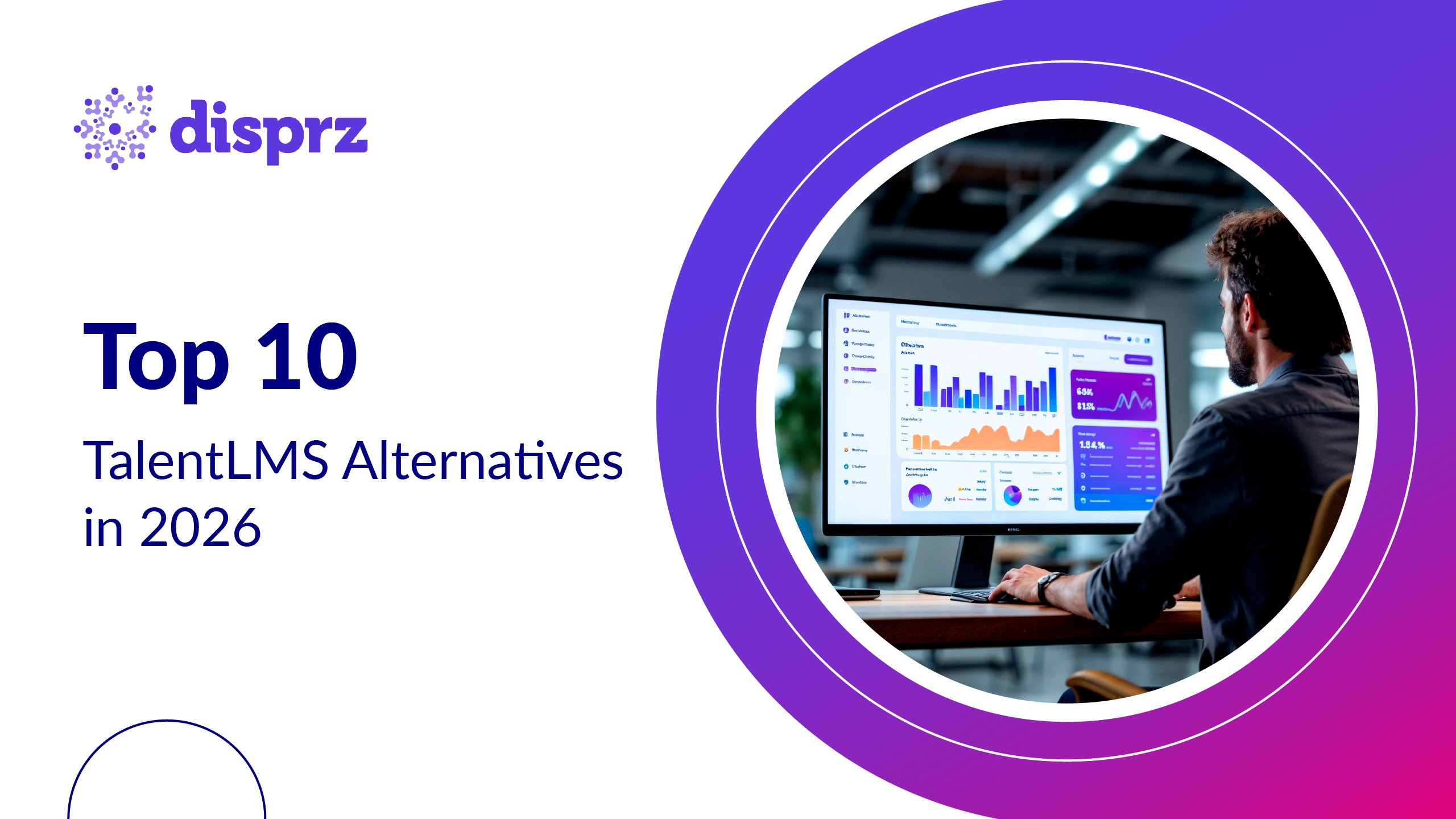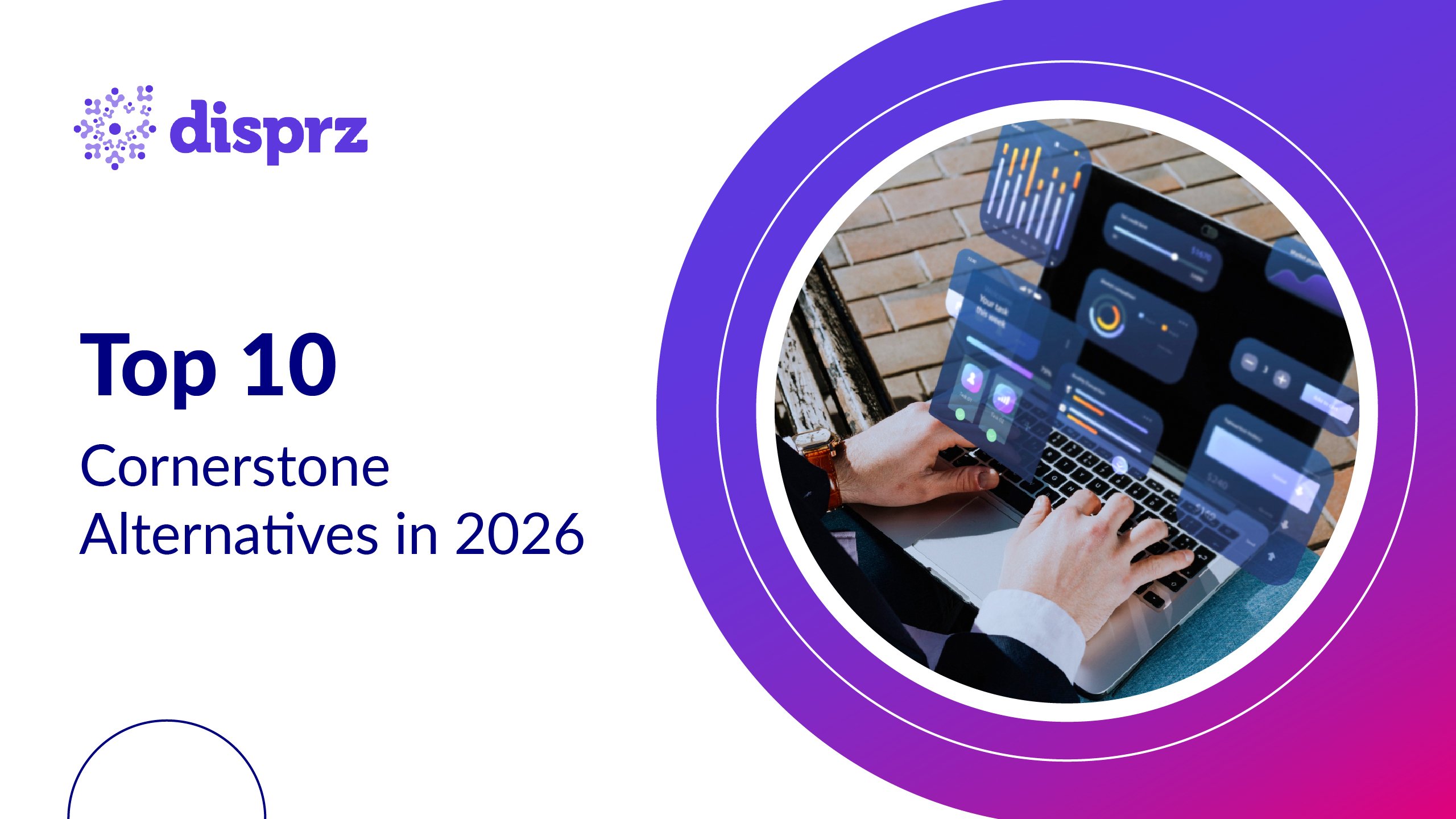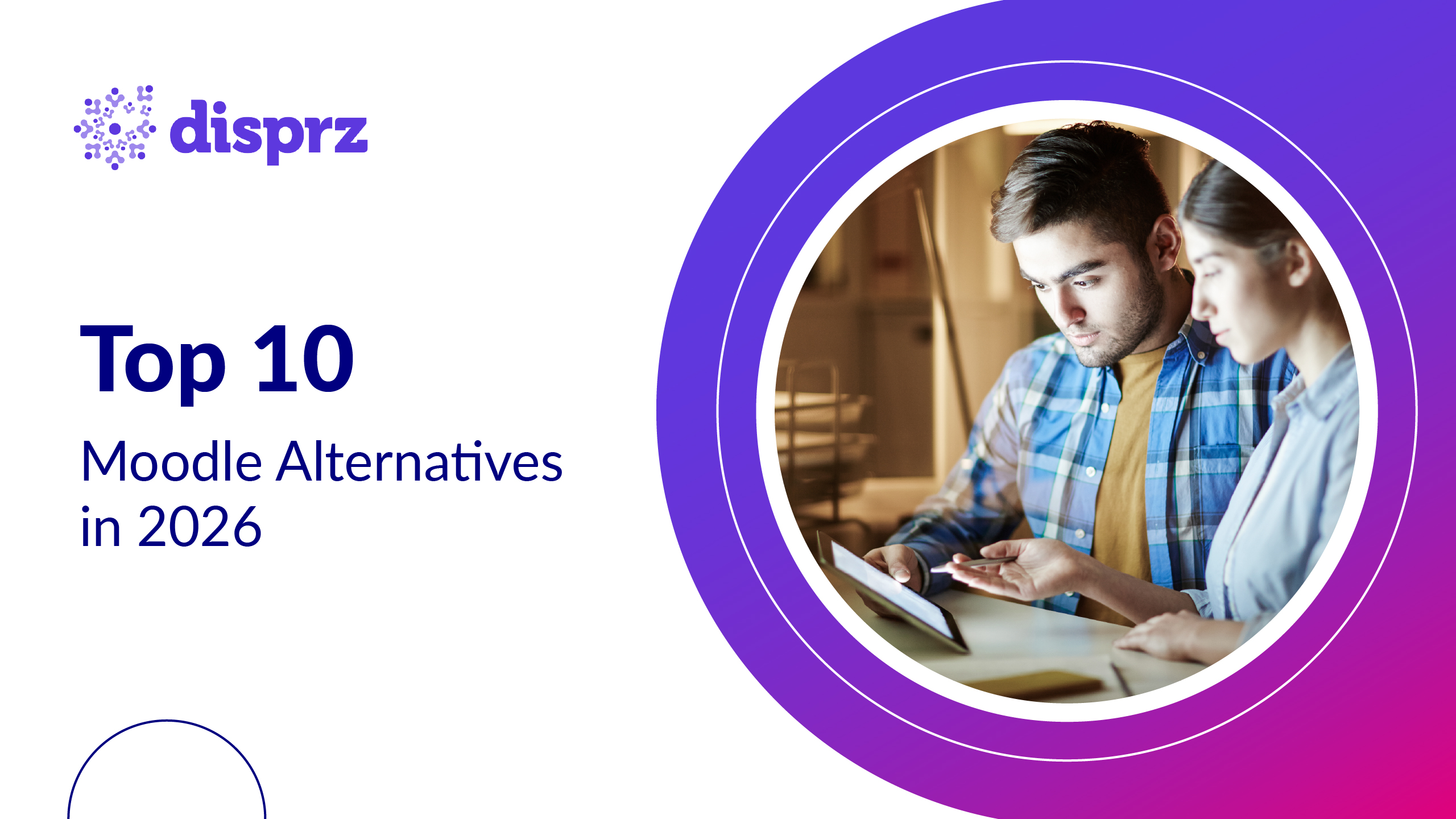In the past, employee training often resembled a one-size-fits-all approach. New hires and current staff would endure hours of mandatory, standardized training sessions that were both time-consuming and often ineffective. It was a system plagued by inefficiencies and inadequacies.
Learning Management Systems (LMS) emerged as a significant improvement over traditional training methods. They offered centralized repositories for training materials, simplified tracking of progress, and made it easier to administer and document training programs. However, they too had their limitations.
Fast forward to today, and the landscape of employee training has evolved substantially. Yet, there is an ever-pressing need for further transformation. In a digital age where information is abundant, skills are in constant flux, and the demand for personalized, engaging, and efficient learning experiences is greater than ever, traditional LMS no longer suffice.
As per a report by Deloitte, 89% of business leaders have agreed that skilling is the need of the hour and are becoming increasingly important for organizations. Therefore, its time where Learning Experience Platforms (LXPs) come into play. LXPs are equipped with the power of artificial intelligence (AI) to provide a holistic, individualized, and interactive learning experience. They transcend the confines of traditional LMS, offering dynamic content curation, content authoring, personalized learning pathways, skill gap analysis, and real-time feedback. With AI-driven LXPs, the transformation of employee training is not just a possibility; it's a necessity.
In this blog post, we'll delve into how AI-powered LXPs are driving this change, reshaping the way organizations approach on-the-job learning, and helping employees acquire skills efficiently and effectively.
Why is it Important to Improve your On-The-Job Learning Technology?
On-the-job learning stands as a practical Learning and Development (L&D) approach that prioritizes the real-time dissemination of knowledge and skills to employees within their workplace.
Enhancing on-the-job technology holds the key to unlocking a myriad of benefits. It not only fosters increased engagement and heightened job satisfaction among employees but also empowers them to take charge of their own professional development.
Moreover, these advancements play a pivotal role in driving operational efficiency by minimizing the time and resources typically associated with conventional training methods. The end result is a more cost-effective solution that provides substantial advantages for businesses in today’s scenario.
4 Benefits of an Enhanced On-The-Job Learning Program
1) Save time and create a culture of continuous learning
The obsolete conventional in-person training is time-consuming and a lengthy process for both L&D professionals and learners. According to a Brandon-Hall Study, learning through e-learning typically requires 40% to 60% less employee time than learning the same material in a traditional classroom setting. Providing learning opportunities online while working helps save time and keeps employees actively involved through continuous learning.
On-the-job learning provides instant access to valuable resources. Employees can conveniently dig into personal interests through online learning and improve their job skills.
2) Retain the best talent amidst the great reshuffle
Due to the wild wave of “The Great Resignation,” several industries saw a higher than normal quit rate last year. This year the harsh reality has received a subtle name – The Great Reshuffle. Instead of just quitting jobs, employees claim to move ahead in their careers for better flexibility, opportunities and perks.
Through effective on-the-job digital learning initiatives, it is possible to prevent employee turnover. When a company prioritizes workforce development, employees feel valued and reciprocate with optimum performance.
3) Overcome the forgetting curve with the instant application
Information is decayed in a human mind over time. For instance, you invited a sales expert on Friday evening to provide training to your sales representatives on “How to follow up after a sales presentation and close deals successfully”. By the time the employee reaches the office on Monday, most of them will forget half of the information as, on average, a human has 6,200 thoughts in a day.
If the same information was shared on a learning platform, the employees could easily refer to the tips before writing a follow-up email and increase their chances of getting a positive response. Hence through on-the-job learning, employees can easily apply what they’ve learned and break the forgetting curve.
4) Unlock the full potential of the existing talent
Skilled employees are a valuable asset for any organization. So it is crucial to create an environment where employees’ full potential is recognized and nurtured.
An advanced learning and development system at work can help identify skill gaps and develop competencies to perform various tasks efficiently. By taking proactive steps toward employee skilling and aligning it with the company’s goals, it is possible to achieve desired outcomes that can positively impact the business’s bottom line.
Role of an LXP in Corporate Learning
A Learning Experience Platform (LXP) is a digital learning solution designed to enhance corporate learning by providing a personalized, engaging, and flexible environment for employees to acquire knowledge and skills in different formats.
Its key roles in corporate learning include:
Personalization: LXPs use AI-driven algorithms to tailor learning content and pathways to individual employee needs and preferences, improving engagement and knowledge retention.
Content Curation: They offer curated content from various sources, ensuring that employees have access to up-to-date and relevant information.
Skill Development: LXPs facilitate skill gap analysis and provide targeted learning experiences to help employees acquire the specific competencies required for their roles.
Collaboration and Social Learning: They encourage collaboration, peer learning, and the exchange of knowledge, fostering a more interactive and community-driven learning culture within organizations.
Features of an AI-Powered LXPs
Personalization of Learning Paths
AI-Powered LXPs leverage machine learning algorithms to create highly customized learning journeys for individual employees. These platforms analyze a user's past interactions, performance, and preferences to suggest relevant content, modules, and courses.
By tailoring the learning experience to each learner, personalization enhances engagement and ensures that employees acquire the skills and knowledge they need to excel in their roles.
Content Curation and Recommendation Algorithms
AI-driven LXPs are adept at curating a vast array of learning resources. They use recommendation algorithms similar to those employed by platforms like Netflix or Amazon to suggest the most relevant and timely content to users.
This feature ensures that employees have access to the latest and most pertinent information, making their learning experiences more efficient and effective.
Skill Gap Analysis
AI-powered LXPs provide the capability to assess and analyze the skills and competencies of individual employees. By identifying skill gaps, these platforms can suggest targeted training or learning activities to bridge those gaps.
This feature enables organizations to align employee development with specific job requirements and organizational goals.
Real-Time Feedback and Assessment
These LXPs offer real-time feedback and assessment tools, allowing employees to gauge their progress instantly. AI can automatically grade quizzes and assignments, provide constructive feedback, and track individual and group performance over time. This immediate feedback loop motivates learners to improve and adjust their strategies, promoting continuous skill development.
Mobile and Microlearning Capabilities
AI-powered LXPs are often accessible on mobile devices, enabling employees to learn on-the-go mobile learning. This feature caters to the modern workforce's preference for flexible and on-demand learning. Additionally, LXPs support microlearning, breaking down content into bite-sized modules that are easy to digest, making learning more manageable and reinforcing retention.
Gamification and Social Learning
These platforms incorporate gamification elements, turning learning into an interactive and enjoyable experience. Points, badges, and leaderboards encourage healthy competition and engagement.
Furthermore, AI-powered LXPs promote social learning by facilitating communication and collaboration among employees. Learners can share insights, ask questions, and learn from their peers, creating a vibrant learning community within the organization.
What On-The-Job Learning Challenges can an LXP Solve?
On-the-job learning is a propulsion fuel to drive a business to higher orbits of overall excellence. However, a few wrong turns can block the path to success. Here are a few on-the-job challenges that make the process ineffective.
1. Ineffective training approaches that don’t scale
OJT is resource-heavy. It is important to ensure every team member gets the right information at the right time. A lean L&D team can ensure this for a handful of people. But accomplishing this at scale by providing the same consistent experience throughout the organization is a cumbersome task. It is important to have a scalable LXP powered by automation that provides updated information in real-time.
2. Lack of employee engagement due to irrelevant L&D
Today it’s imperative to tap into the interest of employees and understand what they want to learn.
Relevant L&D is crucial for driving engagement. Employees want to learn skills that impact their daily work routine and help them do their job better. The training sessions should have real-world applications and use cases that the employee can relate to and apply to their work. The employees’ learning requirements and expectations are changing; hence it is pivotal to develop an agile learning environment that adapts to changing needs.
3. Balancing OJT experience in a hybrid work atmosphere
Companies across the globe are adopting the hybrid work model, combining in-office and remote work, to offer more flexibility. However, these companies are facing a challenge in balancing the on-the-job learning experience with a hybrid work model.
A cutting-edge LXP provides an effective OJT experience regardless of where the employees are working. It enables L&D professionals to effortlessly create and assign the courses to ensure real-time learning, even in a hybrid work environment.
How Does an LXP Provide Engaging On-The-Job Learning Experiences?
Today smart technologies are revolutionizing our lives. When it comes to learning and development, why cling to traditional methods when an AI-powered LXP provides advanced functionalities to take the on-the-job learning to the next level?
Most forward-thinking companies are jumping on the LXP bandwagon and leaving traditional methods behind.
Here are a few reasons to use an LXP over traditional learning technologies:
1. More flexibility – Switch between interest-based and push-based learning as per the requirement
In the L&D space, push-based learning seems compulsive, but it has its perks that cannot be overlooked. However, creating a personalized and on-demand learning culture is equally important where employees can explore the subject that interests them or access important learning materials when they get stuck during work.
An LXP provides the best of both worlds. The trainer can create a learning/onboarding journey for the employees and expect them to complete it within a stipulated time frame. While through interest-based learning, employees can take ownership of their learning and development. They can enroll in desired courses to acquire the skills they need for fulfilling their professional goals.
2. Latest skill-based content – Get the latest relevant content fetched by AI
The top publications of the industry like McKinsey, TED and Forbes keep publishing insightful articles/videos regularly for different job roles, use cases and industries. They provide tips and strategies to address various pain points. Why not leverage the knowledge to address several hurdles employees face while working.
With an LXP, the L&D professionals don’t even need to do the hard work of searching and sharing relevant content. Based on the skills defined in the LXP, the AI directly fetches the latest information from various resources and recommends it to the learners.
3. In-depth analytics – Beyond completion, measure learning progress and engagement
LXP focuses on the learner; hence it amasses data that can help understand what the learner wants, and accordingly, the L&D leader can tweak the learning programs. It provides necessary metrics that help identify early indicators of success or failure to take real-time actions.
4 Key Features an LXP Must Have to Drive Impactful On-The-Job Learning
There are multiple options in market when looking for an LXP. However, it is crucial to check the key aspects of an LXP before choosing one. An advanced LXP is loaded with rich features that play a pivotal role in creating a positive learning ecosystem.
Here are the key features of an LXP to look for:
1. Skill driven learning
During on-the-job learning, it is critical to focus on overall skill development as employees need to have the right skill to do their job better. Companies can leverage platforms like Disprz LXP that helps in end-to-end skilling, from skill identification ( role-based skilling) to skill assessment, skill-building and measuring the skill impact.
For instance, a sales manager needs to have budgeting, negotiation, networking, communication, active listening skills, etc. While a customer success manager needs to have account management, customer orientation, stakeholder management, and conflict resolution skills. Similarly, based on the business objectives and designation, a catalogue of skills is created for different roles in the company.
Once the skills are defined, the proficiency level box is ticked within each team. Through manager assessment or self-assessment, the employees are rated to find out their proficiency level for each skill. Upskilling through an LXP helps employees understand what their current proficiency level is and what skills they need to develop to move to the next level.
Read how Deloitte leverage Disprz learning experience platform to provide skill-driven learning for its employees and achieved 95% success rate in course completion.
2. AI-based personalized learning
To make the on-the-job learning successful, it is crucial to add a pinch of personalization. Employees will be motivated to self-enroll in a course when they find it relevant. LXP can help in offering personalized learning experiences to employees.
“AI-based personalization” is one of the most powerful features of an intelligent LXP, such as Disprz LXP that has captured the attention of various industry leaders across the globe.
Personalized learning feature in this platform helps support each employee’s learning goals, making it effective, efficient and engaging. Based on the employee’s interest and skill scores, AI recommends relevant content to the learners and helps personalize the workplace learning experience.
3. Deep skilling analytics
Is your on-the-job learning program successful? Well, companies can now measure the effectiveness of the learning programs through LXP’s analytics feature. Advanced and intelligent tools like Disprz LXP provides insights into what’s working and what needs to be changed to get desired results. It also provides a unified view of all the important metrics that matter for on-the-job learning through a visually appealing analytics dashboard.
Using Disprz LXP, companies can identify critical data on digital learning, including:
-
How a specific user is using the platform
-
What is the login frequency
-
How many courses is a learner completing in a week
-
Which programs are getting the highest clicks
-
How many employees are taking the assessments
-
Which courses have midway dropouts
-
What type of content do you learners complete quickly(what are they most interested in)
-
How long does it take for a learner to complete the onboarding process
-
What are the role scores
-
How well-versed your employees are with respect to the skills they need to do their job better
-
What do managers/peers feel about the employee’s on-the-job performance (360-degree assessment)
-
Managers’ score on employees’ learning progress
4. Blended learning pathways (70 20 10 learning model)
Using an LXP, it is possible to enhance the 70 20 10 learning model and make it more effective by giving the most relevant information when needed on the job.
Here is how:
-
Unwavering determination is pivotal for experiential learning to happen, as 70 % is self-directed learning. The learner needs to take the initiative, interact with the right personnel and enroll in relevant learning programs to address challenges and improve performance.
-
20% of learning happens through social learning. The best LXP offers a social wall where employees can collaborate and learn from their peers. Employees can share relevant resources and documents that can be helpful in skill-building.
-
10% of learning happens through structured learning aligned with business objectives. Here the trainer assigns the courses, and the learners need to complete them in a stipulated time frame, take assessments and improve their skill set to contribute toward the company’s common goals.
Read how Petronas chose Disprz LXP to revamp their workforce skilling utilizing blended learning formats. This approach helped identify essential leadership skills, resulting in an impressive 88% learning agility score—a critical trait for future leaders.
Conclusion
The evolution from obsolete conventional in-person training to the dynamic realm of AI-powered Learning Experience Platforms (LXPs) marks a paradigm shift in corporate learning. The recognition of the inefficiencies in traditional training methods, highlighted by the substantial time constraints for both L&D professionals and learners, underscores the urgency for transformative solutions.
It becomes evident that investing in AI-powered LXPs is not just a strategic move; it is a necessity. By fostering engagement, job satisfaction, and operational efficiency, these platforms empower individuals to take control of their professional growth while equipping organizations to thrive in the face of rapid change. The future of corporate learning is undoubtedly intertwined with the transformative capabilities of AI-powered LXPs, ensuring a workforce that is not just skilled but adaptable and ready for the challenges that lie ahead.
In this regard, Disprz AI-powered LXP stands out as a comprehensive skilling suite, offering L&D professionals a robust tool to elevate the success of on-the-job learning initiatives. This powerful AI-based platform goes beyond conventional approaches, delivering personalized and intelligent learning recommendations. By considering individual roles, interests, and learning preferences, Disprz ensures a tailored and engaging learning experience.
Help your employees take the big leap with an LXP that takes learning to the next level. Request a demo now.



